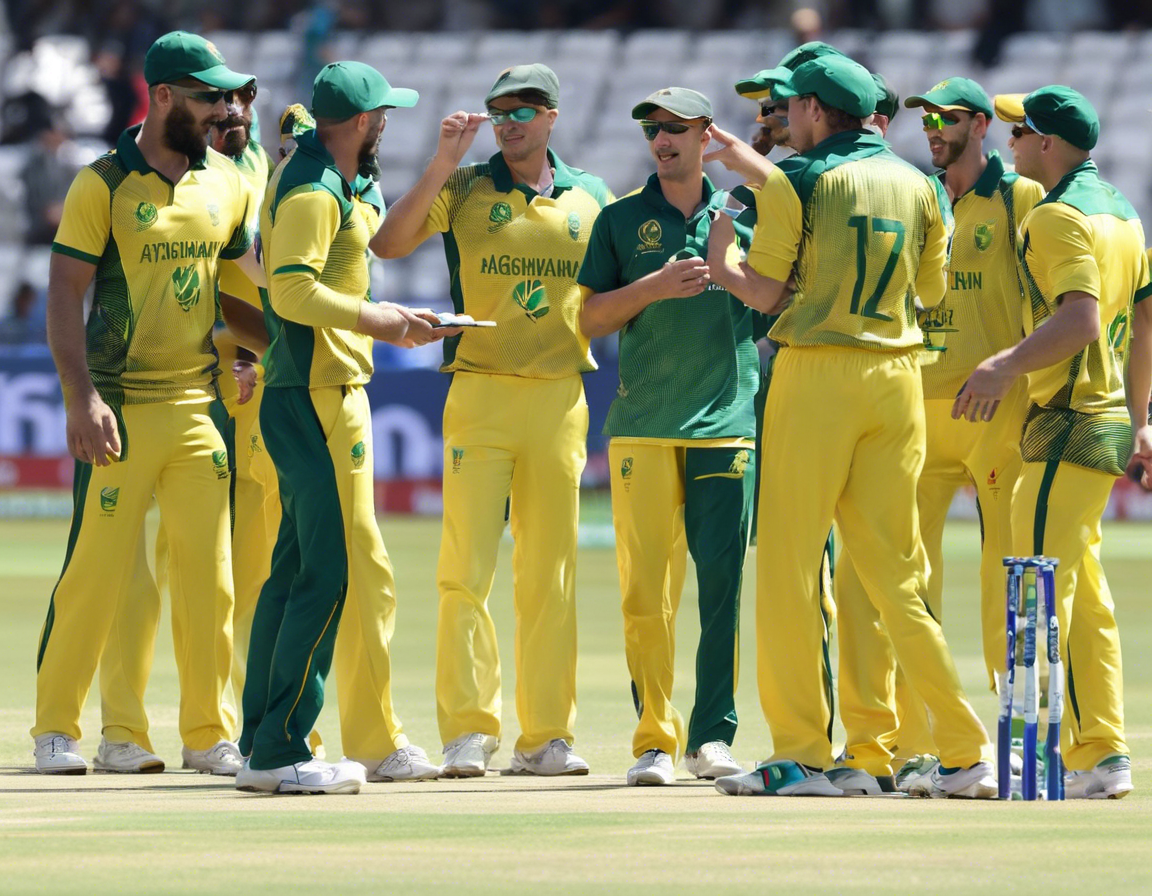Cricket is a passion for many around the globe. International cricket matches generate immense excitement and interest among fans. The clash between South Africa and Afghanistan in a cricket match is sure to grab the attention of fans and enthusiasts. The scorecard plays a crucial role in providing a detailed summary of the match, capturing all the key moments and performances of players.
Understanding a Cricket Scorecard
Before delving into the specifics of a South Africa vs Afghanistan cricket match scorecard, it is essential to understand the various components that make up a typical scorecard:
1. Team Names: The teams playing the match are listed at the top of the scorecard.
2. Date and Venue: The match date and venue provide important contextual information.
3. Toss: This section indicates which team won the toss and chose to bat or field first.
4. Innings: Each team’s batting performance is divided into innings. Information on runs scored, wickets taken, and overs bowled is recorded for each innings.
5. Batting Score: The scorecard lists the batting order, runs scored by each batsman, and how they were dismissed.
6. Bowling Figures: For bowlers, the number of overs bowled, runs conceded, wickets taken, and economy rate are recorded.
7. Extras: Extras, such as wides, no balls, and leg byes, contribute to the team’s total score.
8. Fall of Wickets: This section details when each wicket fell and the total runs scored at that point.
9. Partnership: It shows the runs scored by each pair of batsmen and the partnership’s duration.
South Africa vs Afghanistan Cricket Match
In a hypothetical scenario, let’s create a mock scorecard for a T20 match between South Africa and Afghanistan:
Team Names:
South Africa vs Afghanistan
Toss:
South Africa won the toss and elected to bat first.
South Africa Innings:
– Quinton de Kock – 45 (32 balls)
– Temba Bavuma – 22 (18 balls)
– Rassie van der Dussen – 57 (40 balls)
– David Miller – 30 (20 balls)
– Extras – 13 (5 wides)
Bowling Figures (Afghanistan):
– Rashid Khan: 4 overs, 25 runs, 2 wickets, Economy – 6.25
– Mujeeb Ur Rahman: 3.5 overs, 30 runs, 1 wicket, Economy – 7.83
Fall of Wickets:
1-67 (Bavuma, 7.4 overs)
2-102 (de Kock, 12.2 overs)
3-165 (van der Dussen, 18.1 overs)
4-202 (Miller, 20 overs)
Partnerships:
– 1st Wicket: 67 runs (Bavuma, de Kock)
– 2nd Wicket: 35 runs (de Kock, van der Dussen)
– 3rd Wicket: 63 runs (van der Dussen, Miller)
Afghanistan Innings:
– Rahmanullah Gurbaz – 25 (18 balls)
– Hazratullah Zazai – 37 (24 balls)
– Hashmatullah Shahidi – 17 (14 balls)
– Asghar Afghan – 29 (22 balls)
– Extras – 7 (2 wides, 5 leg byes)
Bowling Figures (South Africa):
– Kagiso Rabada: 4 overs, 31 runs, 3 wickets, Economy – 7.75
– Tabraiz Shamsi: 4 overs, 27 runs, 1 wicket, Economy – 6.75
Fall of Wickets:
1-43 (Gurbaz, 5.2 overs)
2-95 (Zazai, 10.5 overs)
3-120 (Shahidi, 14.1 overs)
4-159 (Afghan, 18.3 overs)
Partnerships:
– 1st Wicket: 43 runs (Gurbaz, Zazai)
– 2nd Wicket: 52 runs (Zazai, Shahidi)
– 3rd Wicket: 25 runs (Shahidi, Afghan)
Result:
South Africa won by 43 runs.
Frequently Asked Questions (FAQs)
- What is the significance of a scorecard in cricket?
-
A cricket scorecard provides a detailed account of the match, including individual player performances, runs scored, wickets taken, and partnerships.
-
How is the toss result recorded in a scorecard?
-
The team that wins the toss and chooses to bat or field first is mentioned at the beginning of the scorecard.
-
Why are extras included in the total score on a scorecard?
-
Extras, such as wides, no balls, and leg byes, contribute to the team’s total score and are recorded in the scorecard.
-
What is the significance of ‘Fall of Wickets’ in a scorecard?
-
The ‘Fall of Wickets’ section indicates when each batsman was dismissed and at what total score, providing insights into the team’s batting performance.
-
How are bowling figures presented in a cricket scorecard?
-
Bowling figures include the number of overs bowled, runs conceded, wickets taken, and the economy rate of the bowler.
-
How are partnerships represented in a scorecard?
-
The partnerships section shows the runs scored by each pair of batsmen and the duration of their partnership in the match.
-
What does the final result section in a scorecard signify?
- The final result section states which team won the match and by how many runs or wickets, providing a summary of the game’s outcome.
Cricket scorecards serve as comprehensive records of matches, capturing the essence of each game through detailed statistics and performance metrics. The South Africa vs Afghanistan scorecard, albeit hypothetical, demonstrates how such records encapsulate the excitement, drama, and skill that define the sport of cricket.
